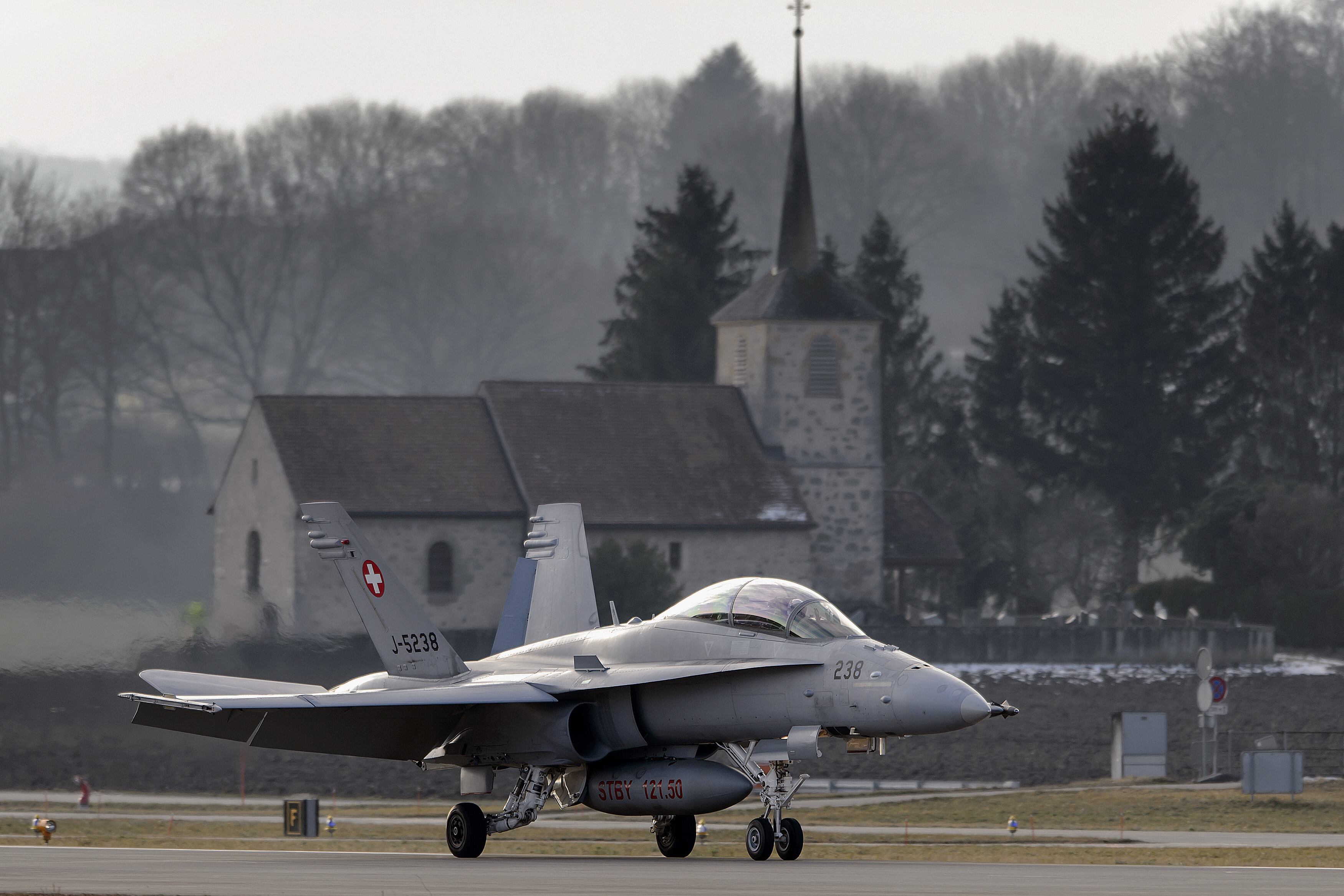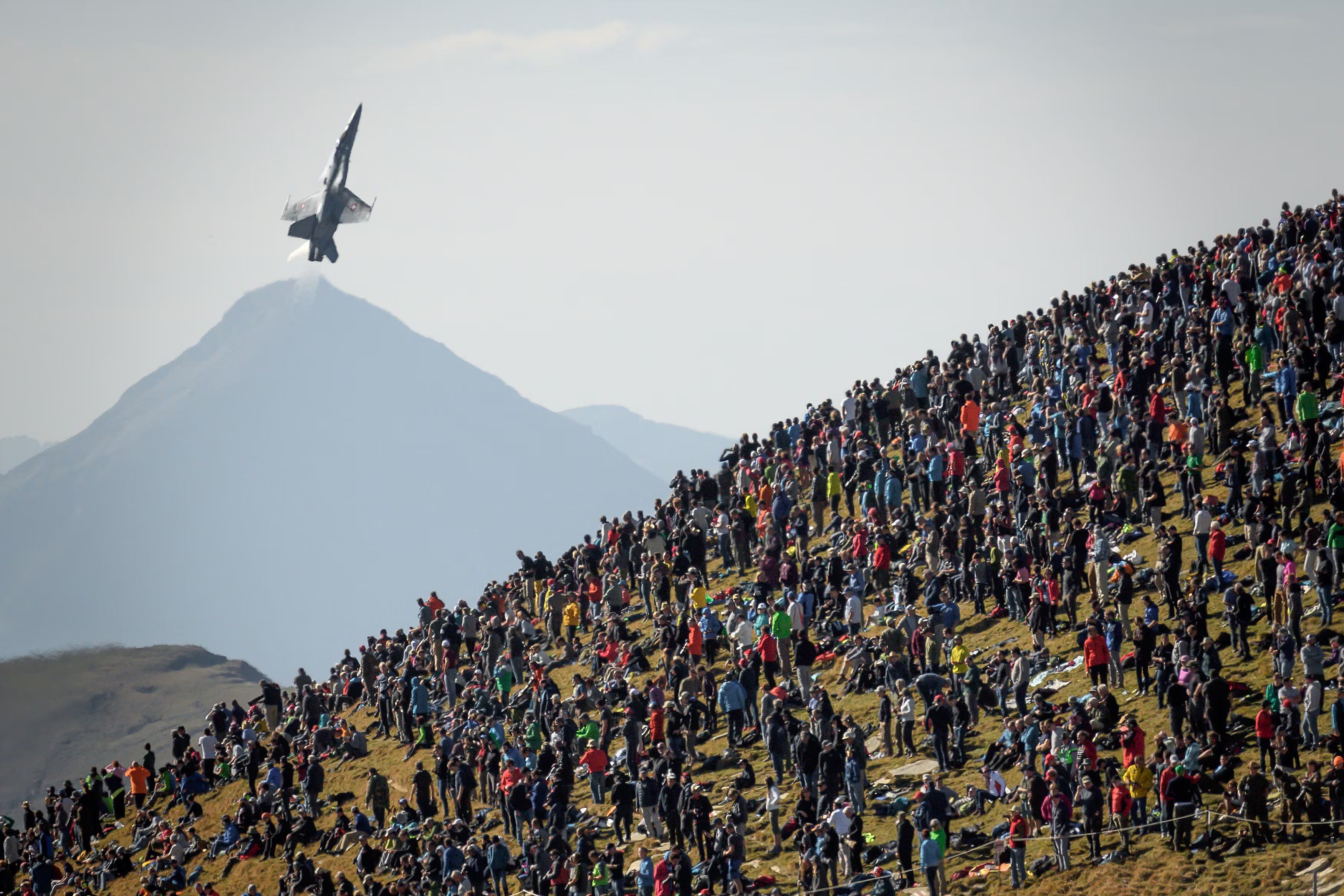COLOGNE, Germany — The Swiss have kicked off flying season for the five types of combat aircraft under consideration to replace the country’s aging fleet, with several demonstrations scheduled between now and early July.
The demos are part of the Swiss “Air 2030” program, an $8.2 billion project to buy new aircraft and ground-based equipment for policing the country’s airspace. The evaluation phase began in earnest earlier this year, as Swiss officials took the contender aircraft for a spin in the simulators of their respective home countries. Now they want to see how the planes fare in the famously neutral nation, whose alpine terrain makes engine thrust and maneuverability handy attributes.
Bringing the Eurofighter Typhoon, the Boeing F-18 Super Hornet, the Dassault Rafale, the Lockheed Martin F-35A and the Saab Gripen E to the Payerne air base near Bern is a “significant effort” for the vendors and governments involved, said an industry official from one of the competing teams. But the payoff — an estimated $6 billion of the total Air 2030 budget — is winning “one of the big, promising campaigns out there,” that official said.
RELATED

All contenders must complete eight test flights each, including one at night. The mission profiles are the same for all parties to ensure equal treatment, according to the Swiss defense ministry.
Notably, the Swiss requirement for competitors is only to bring one or two aircraft specimens, according to a spokesman for Armasuisse, the defense ministry’s acquisition arm. Lockheed Martin expects to bring four of its fifth-generation, stealthy jets to Switzerland for demonstrations beginning in early June.
The Lockheed jets will come from Hill Air Force Base, Utah, making stops on the U.S. East Coast and Ramstein Air Base, Germany, before arriving in Switzerland, the company said. The aircraft will be parked at Payerne during the duration of the tests for more than two weeks, up to June 17, a company spokesman told Defense News.

First up in the demonstration sequence, sorted alphabetically by companies, is a German-British Airbus team. The company this week begins showing a single-seater and a twin-seater variant of its Eurofighter Typhoon. According to a spokesman, the jets are classified as British because they have the newest configuration.
Swiss evaluators have the option of flying along in all two-seater aircraft variants, and one official could be seen in the back seat of a Eurofighter lifting off from Payerne on Thursday morning.
Next up, at the end of April, Boeing will present its F-18 Super Hornet. That plane, along with the Eurofighter, is also still in the running for a German bid to replace its 80-some Tornado aircraft.
In mid-May, Dassault will demonstrate the twin-engine Rafale jet, for which the French government announced a multibillion-dollar upgrade program aimed at improving sensors and weapons earlier this year.
Then, following the F-35 trials, the Saab Gripen E is scheduled to complete the lineup of test flights in late June.
RELATED

The Swiss government decided to move ahead with flight demonstrations despite an ongoing effort to reevaluate the Air 2030 program. The country’s new defense chief, Viola Amherd, tasked a former Swiss astronaut with critiquing its underlying premises earlier this year.
Claude Nicollier, an astrophysicist and former military pilot, has until the end of April to review a 2017 expert report on which the program was built.
That analysis prescribes that Switzerland needs a fleet of 30 or 40 aircraft to intercept aerial targets that fall outside the range of ground-based defenses. Officials want enough capacity to have four planes in the air at any given time during crises.
Sebastian Sprenger is associate editor for Europe at Defense News, reporting on the state of the defense market in the region, and on U.S.-Europe cooperation and multi-national investments in defense and global security. Previously he served as managing editor for Defense News. He is based in Cologne, Germany.







